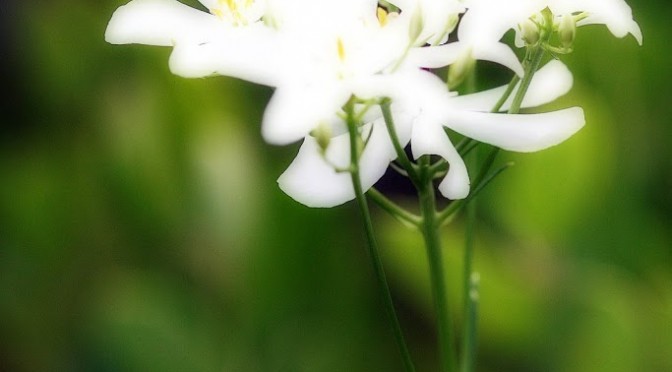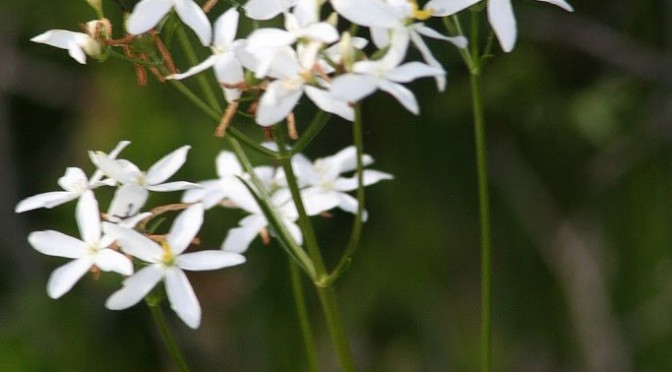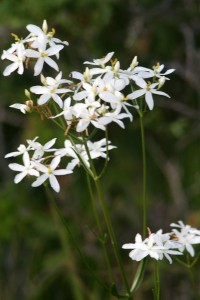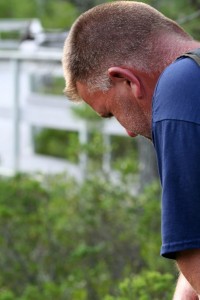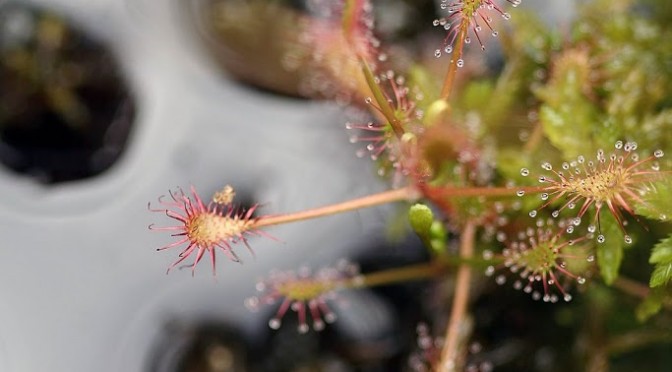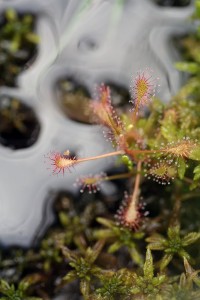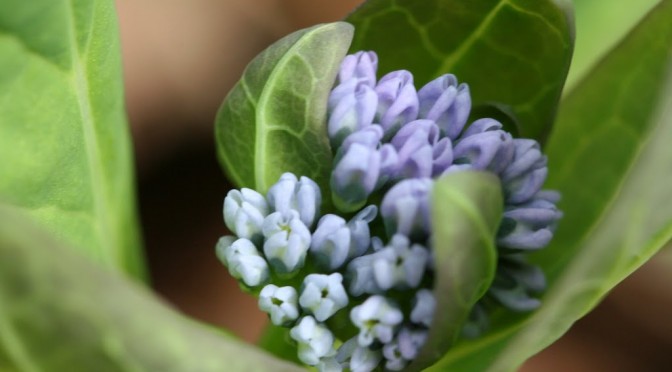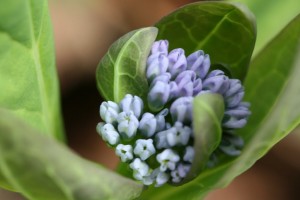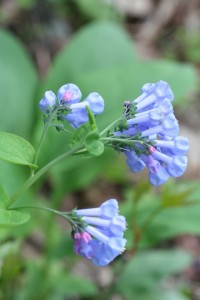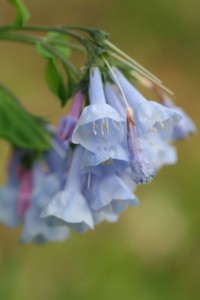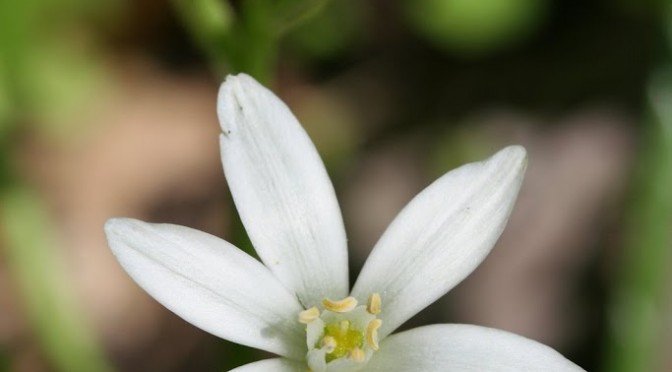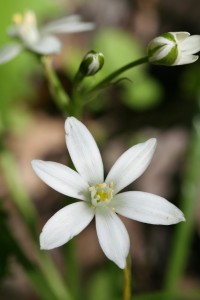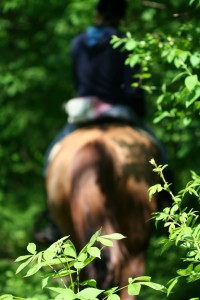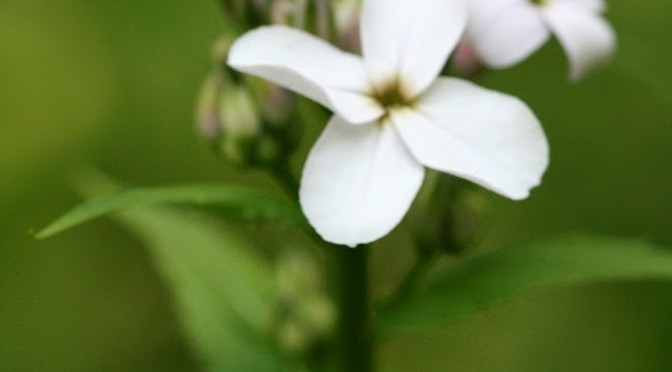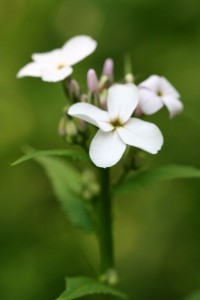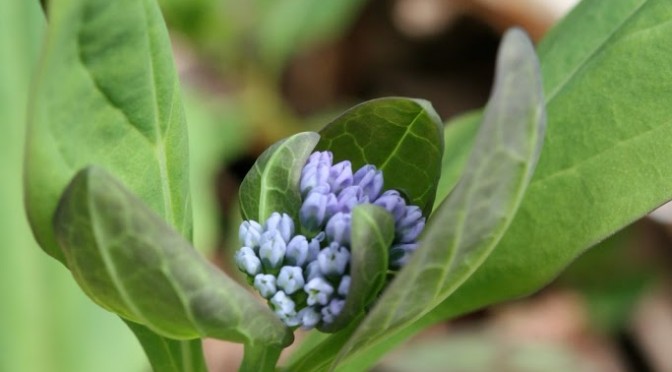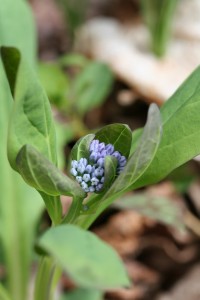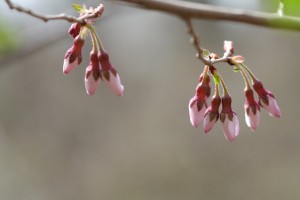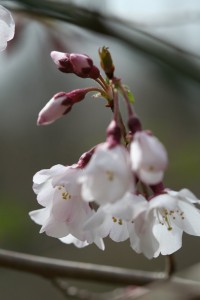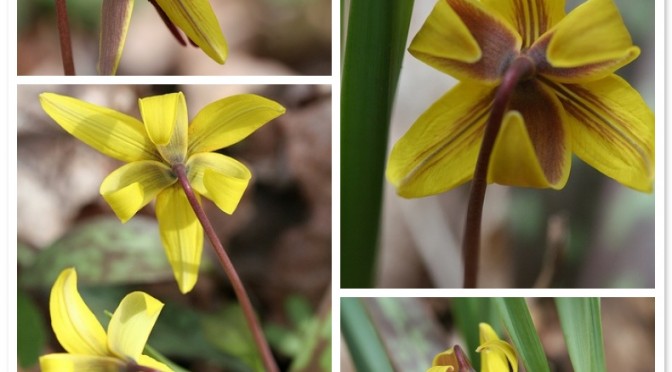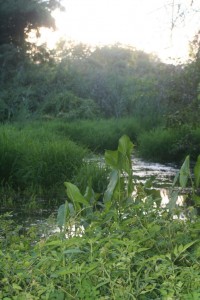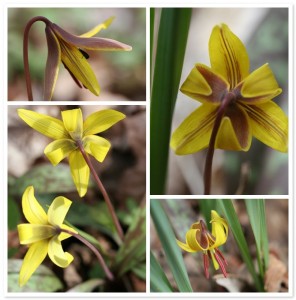 Another find from the brookside trail. I walked past these at least twice before I noticed them, and then I saw patches of them everywhere – most weren’t blooming yet; only their purplish-spotted green leaves gave away their presence. Ther’ye tiny things and easy to miss at about six inches high.
Another find from the brookside trail. I walked past these at least twice before I noticed them, and then I saw patches of them everywhere – most weren’t blooming yet; only their purplish-spotted green leaves gave away their presence. Ther’ye tiny things and easy to miss at about six inches high.
I’m trying to teach myself wildflowers, and it seems half the exercise is in finding them, never mind identifying them! I have to get my head out of the clouds and my eyes off the treetops and look down at my feet for a new perspective on the natural world.
The few wildflowers that I recognize I know only from books and I’m finding the wildflower ID guides to be fairly useless this early in the learning process. Reminds me of what it felt like when I was first learning to identify birds – the field guide only confuses and frustrates. I’m having better success with with a few books by Hal Borland. Who else? One, A Countryman’s Flowers with photographs by Les Line, was a gift from my father a few years ago. I’m sure it’s out of print, but you might find it online with some searching. What I like about it, in addition to the photographs, is that the flowers are grouped by habitat, helping a beginner like me to know what flowers to expect where. Of course a standard wildflower ID guide includes that info, but it’s buried with all the other confusing stuff that makes my eyes glaze over. The categories are basic – the dooryard, the roadside, the old pasture, and brookside and bog and the book only includes 85 species, but I figure that’s enough for someone just starting out. The book also features Borland’s delightful essays; one for each species and includes info on growth and flowering habits as well as a bit of folklore. Of the trout lily, he writes:
“If you don’t know this flower by this name, try dogtooth violet, or yellow adder’s tongue, or fawn lily… The names trout lily and fawn lily come from its time of blooming – late April and May, when trout are biting in the brooks and when does are dropping their fawns in the woodland… Dogtooth violets mean May Day to me. As a small boy I gathered them for my May baskets, simply because they were one of the few flowers that always were in bloom by then.”
This book is almost as good as having someone along with me, teaching and telling stories. Does anyone make May Day baskets anymore?
– – – – – – – – – – – – – – – – – – – – – – – – –
Now that I’ve finished ruminating on trout lilies (lol!) I’m off to finally finish up my income taxes. All that’s left to do is recopy them in nice handwriting and make photocopies, and stuff the envelopes. Think I might’ve waited a bit longer?
My husband is off with a fireman friend evacuating nursing home residents in another part of the state. Here on the coast there hasn’t been any significant flooding, but inland to the west is another story. I’m proud of my DH for doing this. I guess we all have our sense of duty – me to the IRS and him to something a bit more valiant.
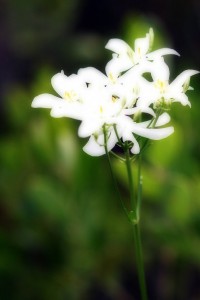 Lance-leaved sabatia; at least I’m calling it that! In comments on Saturday’s post, Patrick reminded me of a helpful website for Pine Barrens plant ID. That, combined with all six of my wildflower guides, helped me decide what this flower is. I think so, anyway.
Lance-leaved sabatia; at least I’m calling it that! In comments on Saturday’s post, Patrick reminded me of a helpful website for Pine Barrens plant ID. That, combined with all six of my wildflower guides, helped me decide what this flower is. I think so, anyway.